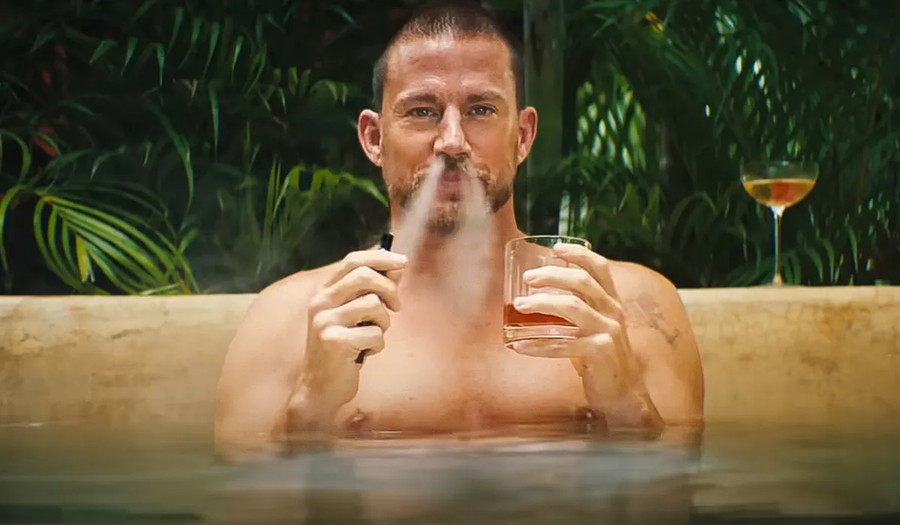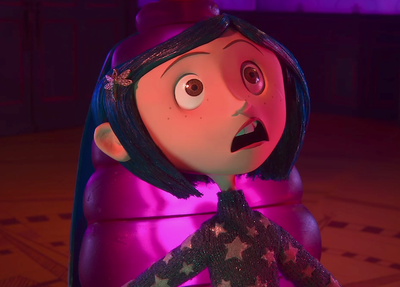
Detailed impactful content guide: Blink Twice
Jess on Aug. 22, 2024
Warning: Blink Twice has been given an R16 rating meaning only audiences over the age of 16 are permitted to watch it. The content warning includes brutal violence, cruelty, rape, drug use and offensive language.
Two members of our Youth Advisory Panel (YAP) attended Blink Twice alongside Te Mana Whakaatu staff during the classification of the film. Their thoughts about the most impactful scenes are featured throughout this guide.
***This guide contains spoilers for the film and discusses content that might be challenging for some viewers.***
What’s it about?
In Zoe Kravitz’s directorial debut Blink Twice, best friends Frida (Naomi Ackie) and Jess (Alia Shawkat) get an exclusive invite to a private island from tech billionaire Slater King (Channing Tatum). What starts as a luxurious getaway quickly turns sinister when Jess disappears. As Frida and guest Sarah investigate, they discover a dark secret: guests are being drugged, abused, and have their memories wiped each night.
Ahead of its release in theatres on 22 August the distributor for Blink Twice, Amazon MGM Studios, has issued a trigger warning for sexual violence and mature themes.

What to expect:
Brutal violence
There's a lot of very bloody and gruesome violence which includes stabbings, shootings, blunt impact, asphyxiation and more, making some parts hard to watch. It starts off during a long revenge scene when one of the guests repeatedly stabs a man, leaving a knife in his neck, with blood visible between his fingers. A man is stabbed through the hand with a corkscrew, which he later tries to remove. A character attempts to attack a man with a chair, but before she can manage her head is smashed with a stone chessboard – this is a very gory moment. Another man gets his head crushed with a statue, and there's a close-up of his bloody face. Slater King kills a woman by crushing her throat with his foot as she struggles to breathe, while the camera focuses on him watching her die. Frida bites off a man's pinkie finger in a detailed close-up.
YAP members said the corkscrew going into the man’s hand and the woman having her head beaten with a chessboard were had the most impact on them. They thought even though the actual camera shots were brief, the sound effects made the violence seem much worse.
Violence can be particularly challenging for some viewers, especially when it’s realistic, bloody, graphic, cruel, or prolonged. Elements like bone-cracking sound effects and close-ups of bloody injuries can be especially distressing. The violence in Blink Twice is likely to upset viewers who find such intense depictions difficult to watch.
Rape and cruelty
After Jess goes missing, Frida and Sarah both agree they have weird feelings about the island and believe that something is happening to them. Shortly after, they start having flashbacks of sexual violence and abuse happening to them, and then realise they are being drugged each night to make them forget by the next morning. Sarah’s flashback is the most graphic. Although it is brief, you see her visibly distressed while tied up and gagged, bent over with a man raping her from behind. You then get a quick view around the room and see the other guests either being raped, abused, or struggling to free themselves from perpetrators. Two other guests also have memories of themselves being raped and/or abused later in the film.
A flashback shows Frida, whose hands are tied, being chased through a forest. She falls and smashes her head on a rock and becomes increasingly bloody while Slater King laughs at her.
YAP members said the depictions of rape and sexual abuse, especially paired with cruelty, could be triggering for viewers who have experienced or know someone who has experienced sexual violence. They also said these scenes would have a lingering impact on viewers generally.
Given that sexual violence is a central theme in Blink Twice, it’s crucial to consider your own well-being and that of those you’re watching with before pressing play.
Drug use
Guests are drugged using an unidentified substance disguised as “perfume,” which they are gifted by Slater King when they arrive on the island. The memory loss effects of this drug closely resemble those of date rape which is used in real-life cases of rape or sexual violence. Guests unknowingly use this drug throughout the entire film until Frida and Sarah become aware of an antidote that helps them to remember the things from previous nights.
A number of other recreational drugs used in Blink Twice include MDMA, shrooms, marijuana and alcohol. They’re often glamourised as being usual part of life for the rich and famous and are clearly in endless supply.
YAP told us scenes involving the drugs resembling date-rape are likely to impact viewers, especially those who have had experiences or know someone who has had experiences with the substance.
When viewers find content that mirrors real-life trauma, it can be especially difficult to process. In Blink Twice, the use of a drug that mimics the effects of date rape could be deeply distressing for those who have had similar experiences or know someone who has.
Other themes
There are other themes that influenced the age restriction, including offensive language and the overall tone of the film. However it’s the violence, rape, cruelty and drug use that is most likely to be upsetting for viewers.

Blink Twice is likely to be popular with young people because of the well-known actors and directors involved. It’s getting a lot of attention because it’s similar to real events connected to Jeffrey Epstein’s island and has ties to true crime stories. Since the film covers some serious topics, it’s a good idea to talk with your rangatahi if they’re over 16 and have watched or are planning to watch it. Here are some handy questions to help start the conversation:
- What was your favourite thing about the movie? Why?
- How did the story make you feel about the different types of relationships portrayed?
- Would you have done anything different to the main character?
- How did the film handle the heavy topics and are you confused about anything?
- What did you think about the ending?
- What are your perceptions of the villain character?
These questions can be used for films, series and even video games, and if you ask them often this will begin to encourage young people to critically think about what they are watching on their own.
If there’s something you’re wanting to go and see at the movies, make sure you check the warning note to get a good understanding of what challenging content might pop up. And if you are watching with other people, check in with them and see what they like, and more importantly what they really don’t like watching. Remember, spoilers are no longer a thing when trauma is involved.
If you are planning on watching something that does contain heavy themes and scenes, remember these tools to keep yourself safe.
- If it is popular, it doesn’t mean you need to watch it
- Check in with yourself and listen to how you are feeling.
- You can take breaks if you need a breather - the movie or series isn’t going anywhere.
- Really not feeling good? Consider leaving - it will always be available on streaming services later.
Maybe you watched something earlier that day, that week, that month and you still can’t forget it. Reach out for help. Filmmakers intend to make an impact with what they create but this shouldn’t be at the detriment of your mental health.
Helplines
The sexual violence themes could be upsetting for some viewers, especially for those who have gone through similar experiences. If you are struggling with what you have seen on-screen please reach out for help. If you or someone you know needs to talk:
Further reading
- When trauma is involved, there are no spoilers – Blog
- Blink Twice – Content Breakdown
Subscribe to our blog
Stay up to date with the Classification Office blog.


